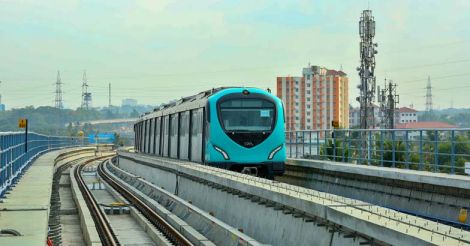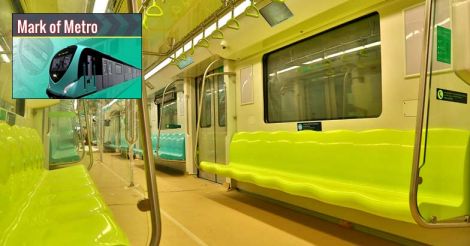Kochi: Why bother with a costly metro when you could have just laid a four-lane highway from Aluva to Tripunithura to ease traffic in the city? Anyway metro is not going to recoup the Rs 5,200 crore investment by selling tickets to passengers. In case you have been wondering, read on.
The metro makes financial sense in many ways. The metro is expected to contribute Rs 369 crore to Kochi’s economy in the first year of operation, according to an estimate prepared four years ago when work on the metro started. In 30 years, the contribution would be Rs 19,442 crore. The estimate relied on the wholesale price index of 2011. It would be significantly higher considering the current WPI.
So how does the metro help Kochi? It helps city dwellers to travel from Aluva to Tripunithura in exactly 50 minutes. Rain or shine or agitation, the metro runs on course. Metro decongests the infamous snarls of Kochi, saves its residents precious man hours and keeps pollution low.
These indices do not exactly fit into a cost-benefit study but the estimate is an attempt to put a value on them. This estimate is based on the monetization of the benefits and subtracting the investment and the cost of maintenance.
For complete in-depth covergae of Kochi Metro
These social returns constitute the basis of the Rs 369 crore benefit. This will increase to Rs 411 crore in the second year as more people switch to the metro. The figure will cross Rs 500 crore by 2019, Rs 562 crore by 2021 and Rs 626 crore by 2025.
Big saving on fuel bill
The residents of the city can shave off crores of rupees from their fuel bills right from the first year of metro, according to rough estimates drawn as part of the project report of Kochi Metro. The estimates assume metro services from Aluva to Petta. Though the metro runs only up to Palarivattom in the first stage, the ride will be extended to Tripunithura in a year or two.
As many as 3.82 lakh road trips may be saved in the first year. This implies savings of 7.64 lakh liter diesel, considering the fact that the 25-kilometer trip from Aluva to Petta burns up two liter diesel on average. The savings on the fuel bill will surely exceed the estimate as almost 60 percent of the vehicles on road runs on petrol.
Fewer vehicles mean less emission, less wear and tear on roads and fewer accidents. All these have been factored into while estimating the social benefit of the metro in monetary terms. The vehicles that remain on the road could move faster in the absence of traffic snarls, saving more fuel in the process. Precious time saved by the passengers is hard to quantify. Still this has also been added to the estimate.
Passengers surge

The metro runs only up to Palarivattom in the first phase. How many passengers would be interested in such a short ride?
As much as 25,000 passengers are expected to ride on metro every hour in the initial months. The coaches may be filled to the brim even though trains run both ways every 10 minutes. The initial surge may be because of the curious travelers who want to experience the novel mode of transport in the city. It may take a while before the metro gets its usual patrons.
Check our special site for Kochi Metro
The project report estimates about 15,000 passengers every hour, or about 3 lakh passengers every day. Even if 50,000 of them are riding the metro for the sake of it, the service would have taken off the roads about 2.5 lakh commuters.
A major chunk of passengers would be those who currently rely on about 600 private buses and about 100 KSRTC buses which run through the city. The next biggest category would be motorcycle riders. Even the number of cars on roads would be reduced once the metro starts operation.
Cost of time
The metro translates to faster and convenient commute. A passenger can reach from Aluva to Palarivattom in 25 minutes, a luxury compared to the present situation. In the second stage when the rail is extended up to Tripunithura, the metro could save almost an hour for commuters.
Traveling from Aluva to Petta can easily take more than an hour now. If you want to go further, to Tripunithura just over a kilometer away from Petta, count another half an hour. If you are traveling in a bus, you would not reach your destination before two hours. The journey time would increase ridiculously in rush hours in the morning and evening.
Once the metro is in place, you could travel from Aluva to Madhava Pharmacy Junction in just half an hour. From Petta, you could reach the Ernakulam Junction (South) railway station in 10 minutes and Maharaja’s College Junction in 12 minutes, no matter how congested the roads are.
The time thus saved could be invested to keep a health work-life balance. The productivity increase has not even been factored into the social rewards of metro.

























